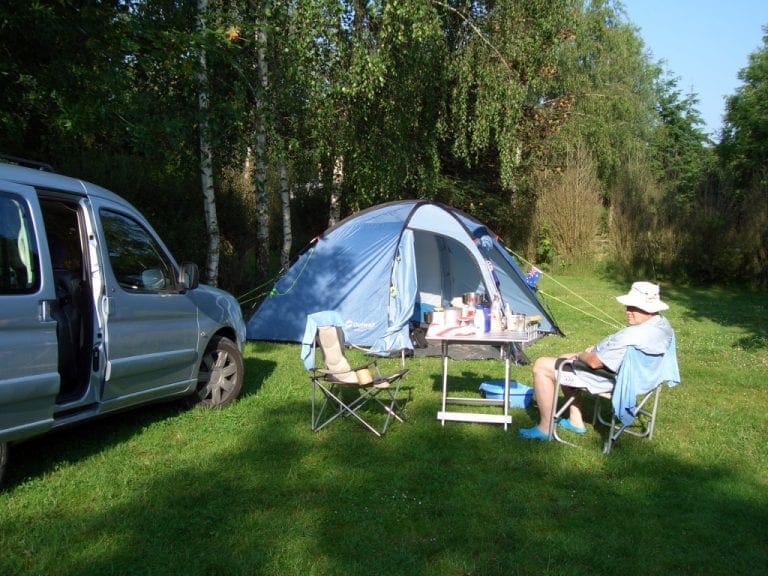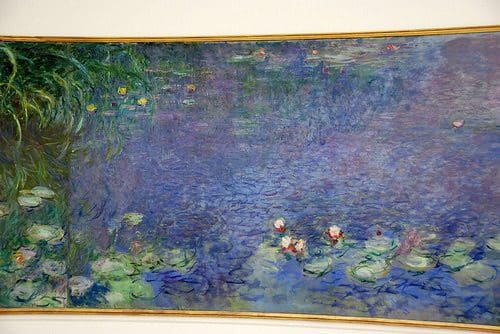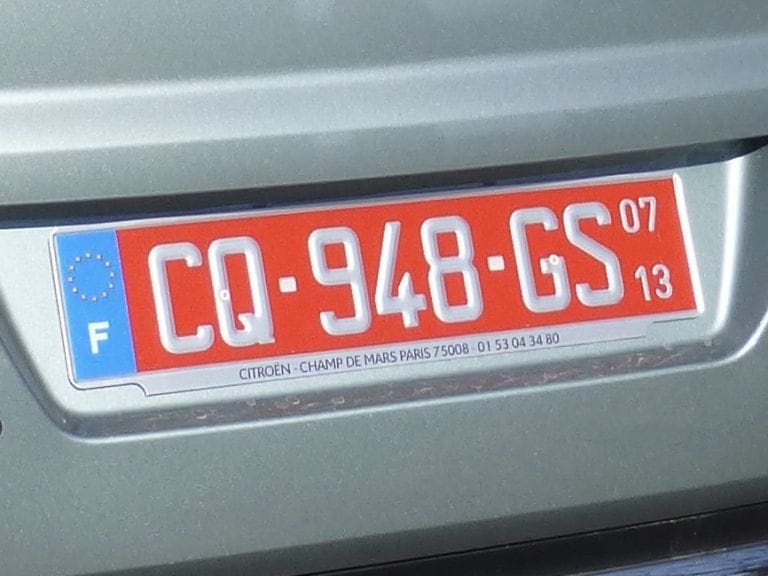France 2013 – last days
27 Apr 2013. Saturday. Day 85. Cool overcast 9C. I had quite a search to find a baguette this morning. I had to walk almost back to the town hall to find one. We loaded the car – carrying the bags down 4 flights of stairs – and drove via the Motorway Tollway to Charles De Gaul Airport. Quite an easy drive with the road crowded with Belgians and Dutch. One final bit of diesel to make sure we did not run out of fuel. (We are to deliver it empty. How can you actually do that?) The fellow who gave us the car back in Marseille had put into the satnav the exact location to where we had to return the car. She delivered us through a maze of turns and ‘keep left’, ‘keep right’. Helen drove that with me navigating and interpreting.
Suddenly, the TT sign was in front of us and we had done it. We pulled up, unloaded, chatted to people who were about to depart in their ‘new’ car (scary). The TT bloke walked round looking for obvious dings, made a note of the milage. We signed a paper to say we had returned it and that was it. They drove us to the station and we were back in Pairs. Too quick, too easy.
I have quite liked the car – a Citroen C4 Diesel automatic/manual with gps fitted and a sun roof. We did just over 7,000 km in her. Quite a good car. Easy to drive in all the conditions we encountered. It handles the small, narrow roads well and just purrs along the motorway at 130 km/h. Very good fuel consumption. We averaged just a shade over 6 litres per 100 km. I have the impression that this was gradually improving as the engine wore itself in. The car was brand new when we got it with just 4 km on the dial. So, we were running it in. The gps is ok. Its main fault was that its maps are maybe not up-to-date and accurate. The main clue to use it is to follow the blue line of the path on the screen and take her ‘next exit’ or ‘2nd exit’ as advice rather than as a directive. Not being up-to-date might be the biggest down-side of built in gps. The car has very good automatic features: aircon, warning for close objects (very good for reversing), windscreen wipers, lights, winds the windows up on locking. The only real design fault I could find was that we could not leave the windows down when driving more that 80 km/h – it set up a wind vibration that was deafening. I think that would be not good in Oz when the temp is too high for the aircon to cope. The automatic diesel has a tendency to die just when you are calling on it for extra power – eg, to overtake a truck on a narrow road. It also had a tendency to stall on double takes at round-abouts. (Yes, an automatic that stalls.)
Buying a rail ticket at the CDG Airport station could be a bit easier. The ticket machines will take only coins and credit cards. No place to put in notes. A single ticket is €9.50. Two tickets €19. Who has €19 in coins? A very long line up for tickets. But, it all went smoothly from there. RER line B into Paris, one change (that had us lugging the cases up and down many stairs), then onto the Metro station of Alesia. We are about 300m from the Metro at a tiny hotel with beautiful rooms. (Hotel de la Loire) I think each room has been given its own special decor. Lunch at the very nice and up-market Moulin Vert (about 30m from our hotel). We slept for most of the afternoon.
I have to record this. I think I saw two train pick-pockets in action. Helen and I were on an almost empty train. At the first stop (Gare du Nord), for some reason I noticed a fellow get on, look around the doorway where he had entered and make his way to stand next to us. (We were standing in the middle doorway with our load of two suitcases, a day pack and wheelie bag.) He stood next to Helen. Why so close in an empty train? I watched – without appearing to watch. After a station or two, he gave up and went, with his mate who I now saw, and who was dressed in an identical grey hoodie. They sat on opposite sides of the carriage and gave no indication they knew each other. Very sus.
28 Apr 2013. Sunday. Day 86. Cloudy cool and a little drizzle early, mostly fine. 10C We went to Montmartre where the crowds were out in force – and this is just the beginning. What must it be like on a Sunday in June?! Most of the crowd was French, but many of the Belgians and Dutch we saw on the motorway yesterday were here. The living statue fellow was still doing his act at the bottom of the last set of steps to the top. I shook his hand and said hello.
The fellow in the wheelchair who makes dog keyrings was there this time. We saw him in 2007. We had lunch in Consulat Restaurant again – outside this time – just warm enough. Made our way down through crowds and buskers to the dowdy old Moulin Rouge and caught the Metro home to Alesia.
What made my day was the rat! The fellow sitting opposite me suddenly pulled a rat, complete with its little red scarf, out of his coat, gave it a big kiss and let it move around on his leg and up to his neck. A woman passenger gave a shriek and tried to exist the moving train. I said ‘I would like to take your photo’. The fellow with the rat said, ‘Be quick. I get out at the next stop.’ After I’d taken the photo, he put the rat in my hand for a few seconds before putting the rat on his collar, picking up his bag and exiting the train. Very exciting. A rat on his collar walking off the train!
29 Apr 2013. Monday. Day 87. Departure day. Sunny and mild. We had breakfast at the hotel – our last French breakfast – croissants, bread, jam, honey and coffee. Then, packed for the flight. We have two suitcases (each weighing about 20kg), one backpack (about 7kg), one wheelie (less than 5kg). We left them at the hotel and went for a walk around the streets near Alesia Metro. We ended up in a park watching kids play while watched by their nannies. All very controlled. Then, an excellent Pizza and glass of beer, picked up the bags and back to the Metro. Much as I am impressed with the Metro, I am underwhelmed by their ticketing systems. Having said that, the French/Parisians are extremely friendly. One bloke carried Helen’s bag down and up stairs at the change over place from Metro to RER – also, made sure we got on the right train. Helpful and friendly. Chatted to people on the RER. Checked in after a bit of a walk. and hunt for the well hidden checkin spot (number 9). Through security – coats, boots and belt off.
At the end of this 12 weeks, we are more than a little sad to leave France. It has been a good 12 weeks – yes, sometimes a little flat and occasionally it seemed a bit long. However, it has been very enjoyable overall. We have had no difficulties or problems anywhere. All the planning and booking that we did last July all worked. People have been friendly everywhere. For a while, I was trying to keep a bit of a ranking for each of the 12 places. However, I’ve given that up. I think that the two first weeks in Paris come top, Sorgue, Luchon and Somme next, and everything else about even. (Cajarc might have been a low point because of the cold weather – but it had a great butcher. Tillac might have been another low point because there is little to actually see there and it rained every day – but it was very nice d’Artagnan country).
That is the end. Flight from Paris to London. 5 hours in Heathrow. Very thorough security checks – Xrayed and searched. A380 from London to Sydney via Dubai (very thorough security check and search). The A380 is a very big bus to sit on for many hours. From our conversations the cabin crew don’t like them as much as the 74s which ‘were easier to do their job in’. We had booked the exit rows. Advantages are that there is more leg rom. The Disadvantage is that there is nowhere to put anything – rugs, pillows, kindle – all has to be on your lap. There is also a fair bit of galley noise. Fortunately, the head steward gave us each a pair of good noise cancelling headphones. The headphones are fantastic. I doubt that the exit rows are worth the extra money. I got quite a bit of sleep.
Airport Shuttle back to Cherrybrook. We landed at 5:35am and were driving away from the airport at 6am with bags having cleared immigration, customs. Extremely good. But the flight was about half full. Back home by 7:15am. Extremely good given the build up of traffic. Very wooly headed. Vera had waited to see us and in the afternoon Eduard came in to see us. They have done a great job looking after the cats and house. Very nice people – it was very good to have a chance to chat.
So that is it. Twelve weeks in France. Did we enjoy it? Yes. Most of it, I would say. Certainly, the beginning and the end. A few weeks in the middle were a bit tiresome with the wet cold weather. A good place.














